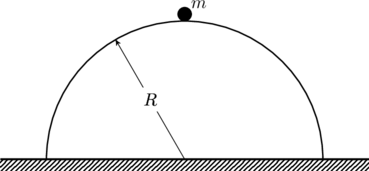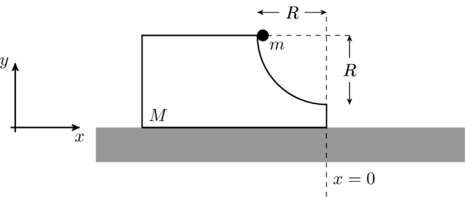A heavy particle of mass ![]() is placed at the top of a semicircular block of radius
is placed at the top of a semicircular block of radius ![]() . Find the height at which the particle falls off, assuming (i) the block is fixed to the ground, and (ii) the block has a mass
. Find the height at which the particle falls off, assuming (i) the block is fixed to the ground, and (ii) the block has a mass ![]() and is free to move. Assume all surfaces are frictionless.
and is free to move. Assume all surfaces are frictionless.

Related problem: Sliding on a block with a circular cut.
Solution:
(i) We first consider the case where the block is fixed to the ground. As the mass slides down the block, there are three forces acting on it: the weight ![]() , the centrifugal force
, the centrifugal force ![]() , and …
, and …
